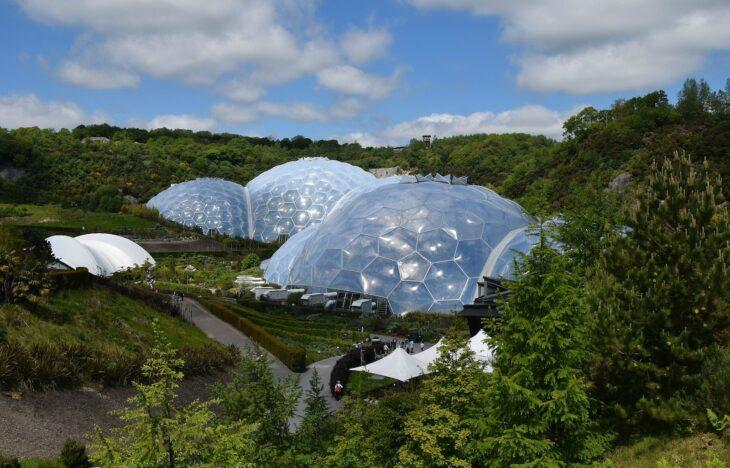The concept of sustainable landscapes has gained significant traction. The integration of environmentally friendly practices in landscaping not only enhances the aesthetic appeal but also contributes to the well-being of our planet. As urban spaces continue to expand and develop, the role of landscape architects in creating sustainable and eco-friendly designs becomes increasingly crucial.
In Dubai, a city known for its architectural marvels, the demand for sustainable landscapes has surged, prompting landscape architects in Dubai to explore innovative strategies that balance aesthetics with environmental responsibility.
Understanding Sustainable Landscapes
Sustainable landscapes prioritize the efficient use of resources, minimize environmental impact, and foster biodiversity. These landscapes are designed to endure, providing long-term benefits for both the environment and the community.
As the world grapples with climate change and dwindling natural resources, the importance of sustainable landscaping practices cannot be overstated.
In the face of escalating climate change challenges and the depletion of natural resources, the imperative for sustainable landscapes becomes even more pressing. Beyond the aesthetic enhancements, these landscapes stand as resilient bastions against the adverse effects of a changing climate.
Sustainable landscaping practices not only mitigate environmental impact but actively contribute to climate change adaptation. By utilizing water-efficient methods, implementing native plant species, and incorporating green infrastructure, these landscapes act as vital carbon sinks and climate regulators.
In a world where the consequences of climate change are increasingly palpable, the role of sustainable landscapes becomes a beacon of hope, showcasing the possibility of harmonious coexistence between urban development and environmental preservation.
Water Conservation: A Paramount Concern
In arid regions like Dubai, where water scarcity is a perennial issue, sustainable landscaping strategies must focus on efficient water management.
Landscape architects in Dubai are adopting innovative irrigation systems, such as drip irrigation and smart watering technologies, to ensure optimal water usage.
Xeriscaping, a landscaping approach that promotes the use of drought-resistant plants, is gaining popularity in the region. By carefully selecting flora that can thrive in arid conditions, landscapers in Dubai are creating visually stunning landscapes that require minimal water resources.
Native Plants: A Key Component
Integrating native plants into landscaping designs is a fundamental practice in sustainable landscaping. Native plants are adapted to the local climate, requiring less water, fertilizers, and pesticides compared to non-native species.
Landscape architects in Dubai are increasingly incorporating indigenous flora into their designs, not only for their environmental benefits but also to create a sense of place and cultural identity in their projects. This approach not only reduces the ecological footprint but also contributes to the overall resilience of the landscape.
Green Infrastructure for Urban Spaces
In rapidly expanding urban environments like Dubai, green infrastructure plays a pivotal role in sustainable landscape design. Green roofs, vertical gardens, and permeable pavements are becoming integral components of urban planning.
These features not only enhance the visual appeal of the city but also contribute to temperature regulation, air purification, and stormwater management. Landscape architects in Dubai are championing the incorporation of green infrastructure to counteract the urban heat island effect and promote a healthier, more sustainable urban lifestyle.
Waste Reduction and Recycling
Sustainable landscapes extend beyond plant life to include responsible waste management practices. Landscapers in Dubai are implementing strategies to reduce waste generation and promote recycling. This includes the use of recycled materials in hardscaping, such as reclaimed wood and recycled plastics. Composting is also gaining popularity as a method to manage green waste, providing nutrient-rich compost that can be used to enrich the soil in landscaping projects.
Community Engagement and Education
A sustainable landscape is not just about design; it’s about fostering a sense of community responsibility. Landscape architects in Dubai are increasingly engaging with the community to raise awareness about the importance of sustainable practices.
Educational initiatives, community workshops, and interactive installations are being utilized to promote a culture of environmental stewardship. By involving the community in the process, landscape architects can ensure the longevity and success of sustainable landscapes.
Integration of Technology
In the age of smart cities, technology plays a vital role in sustainable landscaping. Landscapers in Dubai are incorporating cutting-edge technologies, such as sensor-driven irrigation systems and automated maintenance tools, to enhance the efficiency of landscape management.
These technologies not only optimize resource use but also provide real-time data for better decision-making. The integration of technology allows for a more proactive approach to landscape maintenance, ensuring that sustainability goals are consistently met.
Biodiversity Conservation
Preserving and enhancing biodiversity is a central tenet of sustainable landscaping. Landscape architects in Dubai recognize the importance of creating habitats that support local fauna and flora.
Designing landscapes that promote biodiversity involves careful consideration of plant selection, habitat creation, and the preservation of existing ecosystems. By prioritizing biodiversity, landscapers in Dubai contribute to the overall health of the environment and create resilient, self-sustaining landscapes.
Balancing Aesthetics with Sustainability
One of the challenges faced by landscape architects in Dubai is finding the balance between aesthetics and sustainability. While the city is known for its iconic skyline and luxurious developments, there is a growing emphasis on integrating sustainable practices without compromising on design quality.
Striking this balance requires creativity, innovation, and a commitment to pushing the boundaries of traditional landscaping. By seamlessly blending aesthetics with sustainability, landscape architects in Dubai are setting new standards for eco-conscious design in urban spaces.
Conclusion
Sustainable landscapes are not just a trend; they are a necessity for the well-being of our planet and future generations. In Dubai, landscape architects and landscapers are at the forefront of this movement, pioneering innovative strategies to create visually stunning and environmentally responsible landscapes.
Through water conservation, native plant integration, green infrastructure, waste reduction, community engagement, technological advancements, and a commitment to biodiversity, sustainable landscaping in Dubai is evolving into a holistic and integrated approach that sets a benchmark for cities around the world. As the demand for sustainable landscapes continues to grow, the collaboration between landscape architects in Dubai and the broader community will play a crucial role in shaping a greener, more sustainable future.



